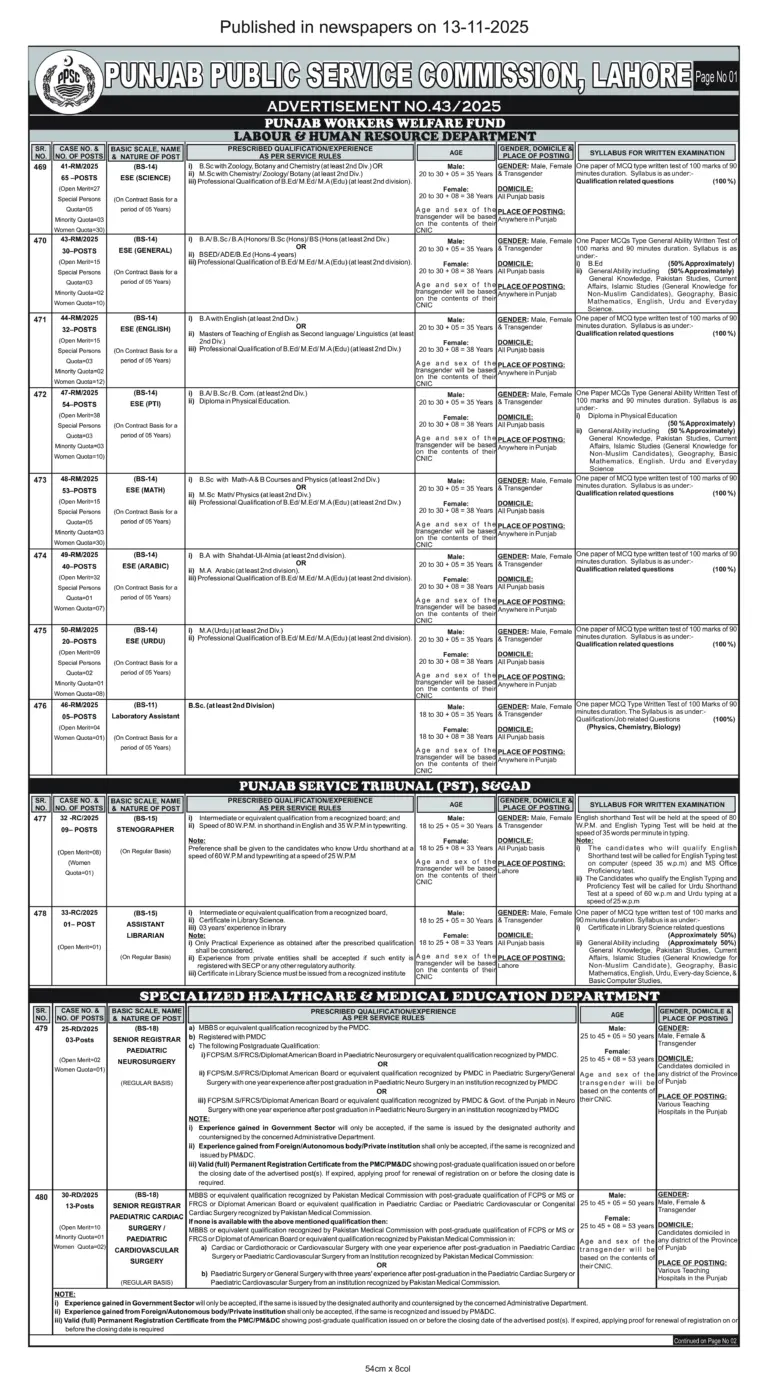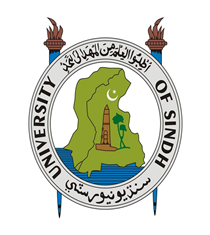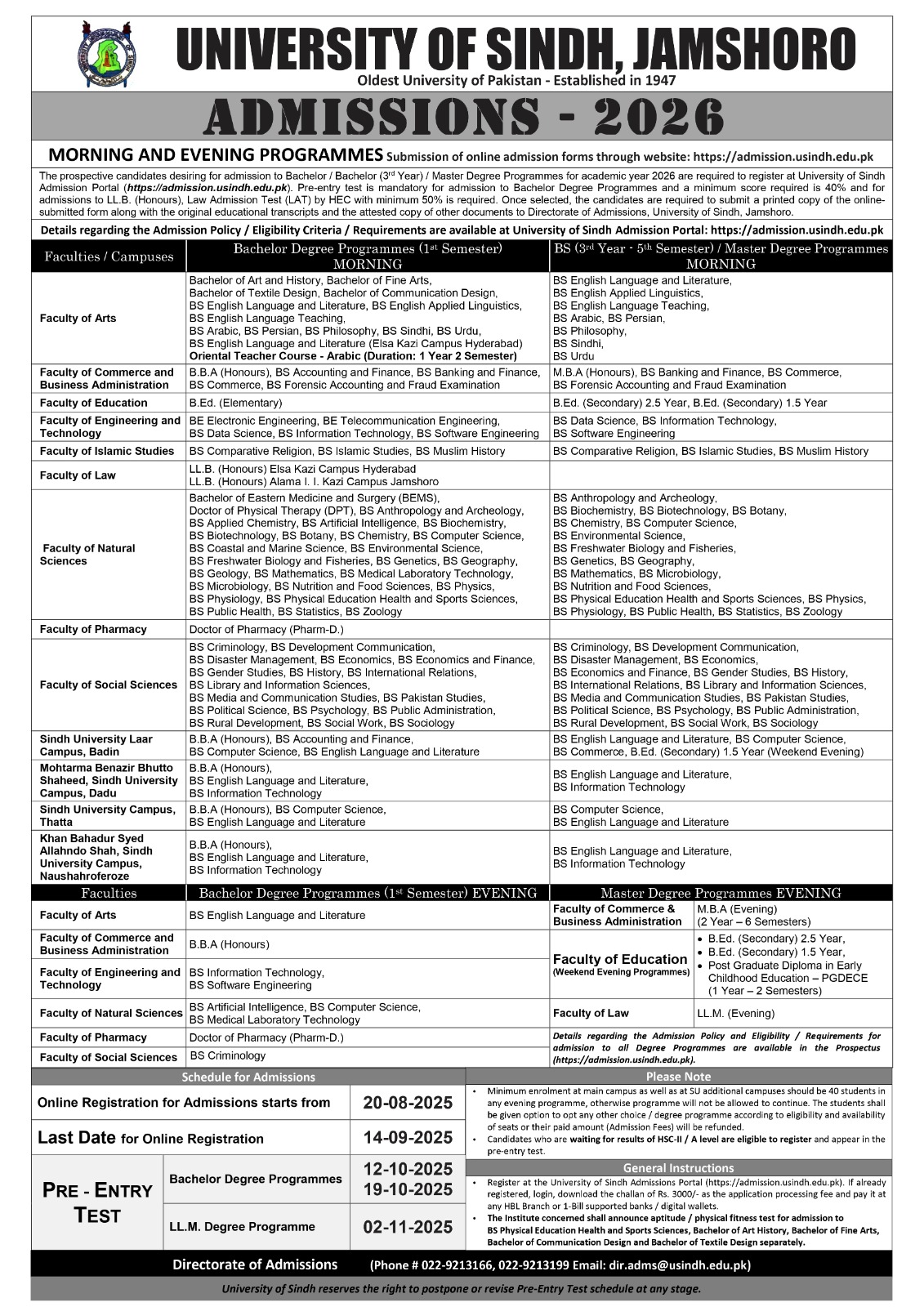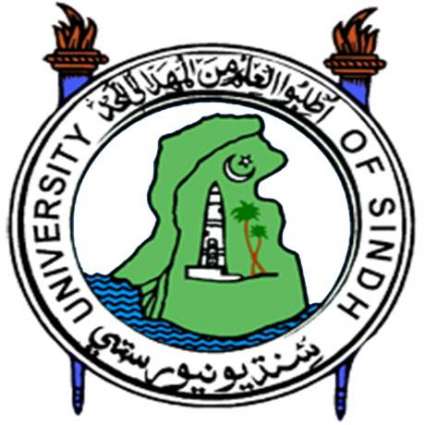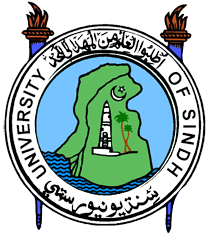The Government of Punjab announces educator jobs via PPSC. Publicly, PPSC announced these jobs on 13 November 2025, and the last date to apply online for educator jobs is 28 November 2025. PPSC announced a total of 294 jobs in these departments: Science, General, English, PTI, Math, Arabic, and Urdu. Candidates who belong to any district of Punjab are eligible to apply. Moreover, the entry test date, interview schedule, merit list, and final selected candidates list dates announced later.
Punjab Educator Jobs Advertisement 2025
Punjab Public Service Commission properly issued an advertisement for educator jobs 2025. In an educator job ad, everything like eligibility, age, syllabus, and BS is clearly mentioned.
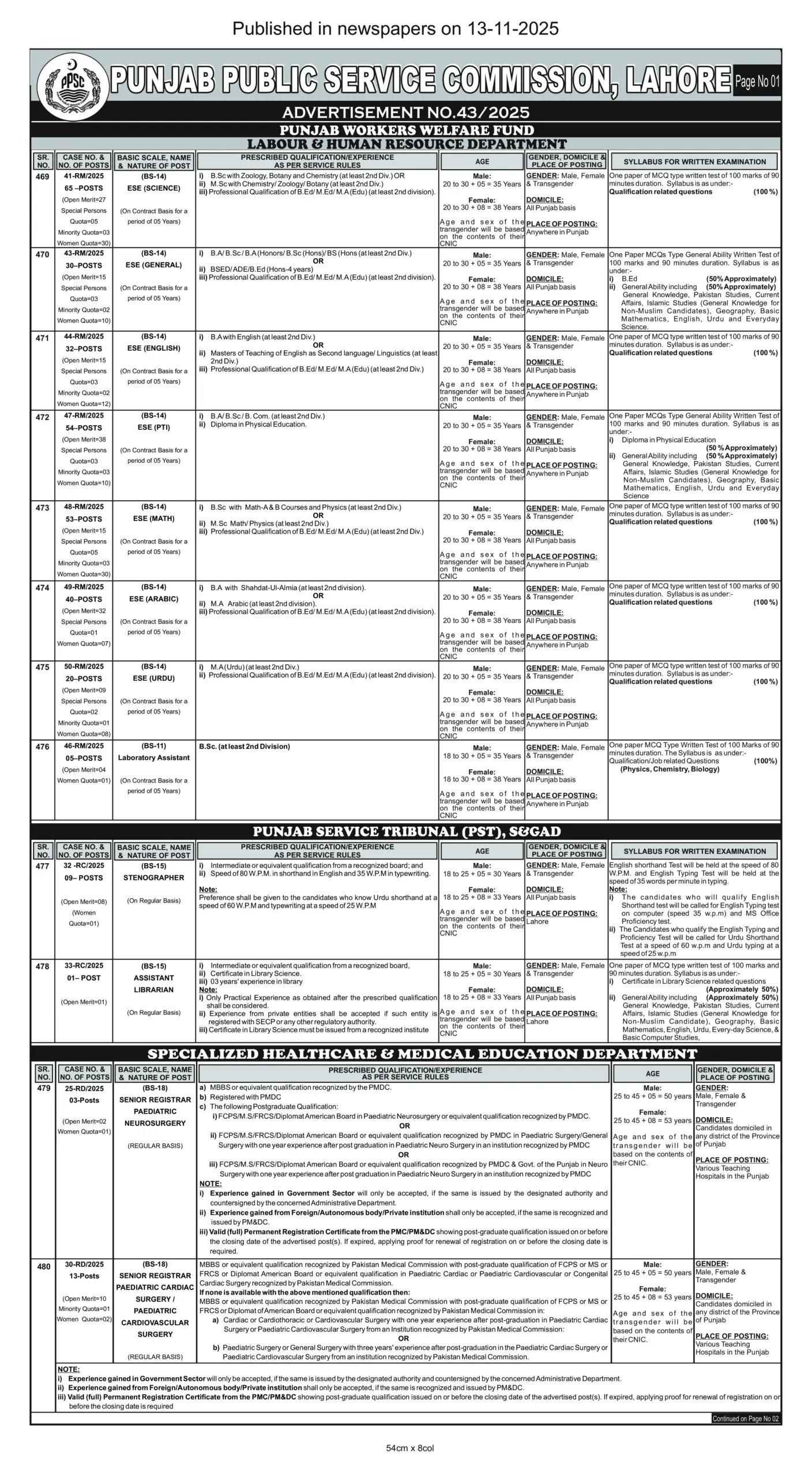
How to Apply for Punjab Educator Jobs.
- Visit the official PPSC website: www.ppsc.gop.pk.
- Register or log in to your PPSC account by creating a login ID and password.
- Browse the job listings and find the educator job advertisement you want to apply for.
- Read the eligibility criteria and job details carefully.
- Click “Apply Online” for the selected educator job.
- Fill out the online application form with your personal information, educational qualifications, and other required details such as birth date, gender, and employment type.
- Upload scanned documents, including your CNIC, recent photograph (each less than 25KB), educational certificates, domicile, and CV if required.
- Review all entered information and submit your application.
- On submission, you will receive an application number and a token number via email and SMS, which you can use to track, edit, or print your application.
Educator Jobs Qualification
| Sr | Post | Qualification / Experience |
|---|---|---|
| 469 | ESE (Science) | B.Sc with Zoology, Botany & Chemistry (1st or 2nd Division) OR B.Sc with Chemistry & Zoology/Botany (1st or 2nd Division) OR Professional Qualification B.Ed / M.Ed (at least 2nd Division) |
| 470 | ESE (General) | B.A/B.Sc/B.A (Hons)/B.Sc (Hons) (1st or 2nd Division) OR BS Ed / B.A Ed (Hons 4-years) OR B.Ed / M.Ed (Professional Qualification) |
| 471 | ESE (English) | B.A with English (at least 2nd Division) OR Master’s in Teaching of English / Applied Linguistics (at least 2nd Division) OR B.Ed / M.Ed |
| 472 | ESE (Physical Education) | B.A/B.Sc (at least 2nd Division) OR Diploma in Physical Education |
| 473 | ESE (Math) | B.Sc with Mathematics + A/B Courses (at least 2nd Division) OR B.Sc with Mathematics & Physics (at least 2nd Division) OR B.Ed / M.Ed |
| 474 | ESE (Arabic) | B.A with Shahadat-ul-Almia (at least 2nd Division) OR M.A Arabic (at least 2nd Division) OR B.Ed / M.Ed |
| 475 | ESE (Urdu) | M.A Urdu (at least 2nd Division) OR B.Ed / M.Ed |
| 476 | Laboratory Assistant | B.Sc (at least 2nd Division) |
Punjab Educator Jobs Age Limit
PPSC administration has decided the age limit, which is for male 35 years for female 38 years. The above candidates are not eligible.
- For Male: 35 Years
- For Female: 38 Years
Domicile Requirements
Now, people have no need for a Domicile because these jobs are not announced for a specified district or tehsil, while all over the Punjab province, candidates can apply online through the PPSC portal.
Educator Jobs Entry Test Pattern
- In general, the test consists of Objective Multiple Choice Questions (MCQs).
- There are approximately 100 marks in total.
- Depending on the position, the syllabus covers subject-specific knowledge (e.g. Science, Math, English, Urdu, Arabic, Physical Education) as well as general knowledge and teaching methodology.
- The duration of the meeting is usually between 90 and 120 minutes.
Preparation Tips for PPSC Educator Jobs
- Make a study plan
- Practice past papers
- Focus on teaching subjects
- Stay updated on current affairs

People are giving information about PPSC educator jobs district-wise, but that is completely wrong. The Punjab government does not issue any information regarding educator jobs disctrict wise but for those candidates who will appear on the final list, the education department will decide about the place of service.

